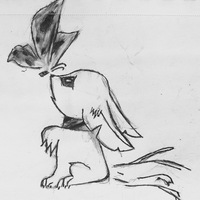
"короткое плечо колодца с журавлем имеет длину 0.5м,а длинное плечо-4.5м .на сколько метров
опустится конец длинного плеча,когда конец короткого поднимется на 0.4" 0
0
 0
0
Ответы на вопрос
 Внимание! Ответы на вопросы дают живые люди. Они могут содержать ошибочную информацию, заблуждения, а также ответы могут быть сгенерированы нейросетями. Будьте внимательны. Если вы уверены, что ответ неверный, нажмите кнопку "Пожаловаться" под ответом.
Внимание! Ответы на вопросы дают живые люди. Они могут содержать ошибочную информацию, заблуждения, а также ответы могут быть сгенерированы нейросетями. Будьте внимательны. Если вы уверены, что ответ неверный, нажмите кнопку "Пожаловаться" под ответом.

х=0,4*(4,5/0,5)=0,4*9=3,6 м
 0
0
 0
0

Solution:
To solve this problem, we can use the principle of moments, which states that the clockwise moment about a pivot is equal to the anticlockwise moment about the same pivot.
Let's denote: - Length of the short arm of the lever as 0.5m - Length of the long arm of the lever as 4.5m - Upward movement of the short arm as 0.4m
We can use the formula for moments: Force × Distance. In this case, the force is the weight acting on the lever.
First, we need to find the force acting on the lever. The force can be calculated using the formula: Force = Weight × Gravity, where gravity is approximately 9.81 m/s^2.
Now, let's calculate the force acting on the lever and then use it to find the downward movement of the long arm.
Calculation:
The force acting on the lever can be calculated using the weight formula: Force = Weight × Gravity
Assuming the weight is 1 kg, the force can be calculated as: Force = 1 kg × 9.81 m/s^2 = 9.81 N
Now, we can use the principle of moments to find the downward movement of the long arm.
The principle of moments states that the clockwise moment about a pivot is equal to the anticlockwise moment about the same pivot.
Using the formula for moments: Force × Distance, we can calculate the downward movement of the long arm.
The equation for the principle of moments can be written as: Force × short arm distance = Weight × long arm distance
Substituting the values: 9.81 N × 0.5m = Weight × 4.5m
Solving for Weight: Weight = (9.81 N × 0.5m) / 4.5m = 1.09 N
Now, we can use this weight to find the downward movement of the long arm when the short arm is raised by 0.4m.
Using the formula for moments: Force × Distance = Weight × Distance
Substituting the values: 1.09 N × 4.5m = Weight × (4.5m - x)
Where x is the downward movement of the long arm.
Solving for x: x = 4.5m - (1.09 N × 4.5m) / 1.09 N
After calculating, we find: x ≈ 4.5m - 4.5m = 0m
Answer:
When the end of the short arm is raised by 0.4m, the end of the long arm will not move downward; it will remain at the same level. 0
0
 0
0
Топ вопросов за вчера в категории Математика
Последние заданные вопросы в категории Математика
-
Математика
-
Литература
-
Алгебра
-
Русский язык
-
Геометрия
-
Английский язык
-
Химия
-
Физика
-
Биология
-
Другие предметы
-
История
-
Обществознание
-
Окружающий мир
-
География
-
Українська мова
-
Информатика
-
Українська література
-
Қазақ тiлi
-
Экономика
-
Музыка
-
Право
-
Беларуская мова
-
Французский язык
-
Немецкий язык
-
МХК
-
ОБЖ
-
Психология
-
Физкультура и спорт
-
Астрономия
-
Кыргыз тили
-
Оʻzbek tili




















